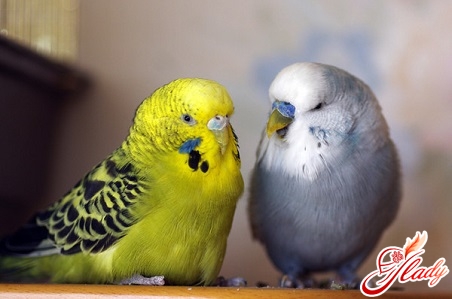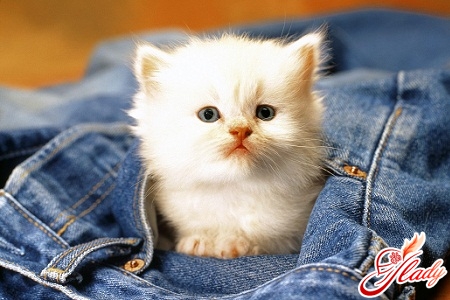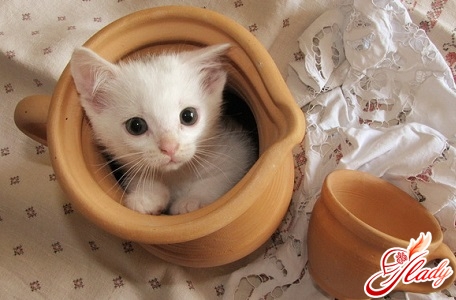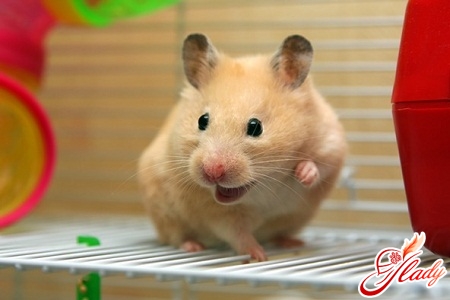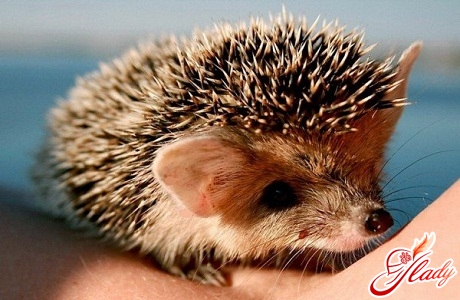 Most likely, not a single exotic domesticThe animal does not have as much public attention as decorative hedgehogs. Their curious, charming, smiling faces, friendly nature and their real usefulness in nature for humans have won the sincere love of most people in all countries. Hedgehogs are also in fairy tales of the peoples of the world. Naturally, they are well known and adored by all children. Moreover, they are almost always positive heroes - cute, resourceful and smart. Thanks to the efforts of breeders in different countries, African pygmy hedgehogs have become real domestic hedgehogs today. They have been working on their selection since 1995, and more than 90 colors of decorative hedgehogs have already been bred, which are now extremely popular in Europe. Hedgehogs, unlike most wild animals, adapt quite easily to life in captivity and get used to people quite quickly. In addition, compared to rodents, they do not gnaw anything in a cage or in a room, they can be quite easily trained to go to the toilet in only one place, domestic hedgehogs do not have a specific smell, like ferrets, and they do not try to mark the territory like cats. As a rule, a domestic hedgehog is friendly to people and other pets. They are curious and active. You can buy this animal in a pet store, and this hedgehog will be specially bred for life at home. And it is not at all recommended to chase an ordinary hedgehog in the forest and then try to accustom it to your apartment, since your efforts will not be successful - an ordinary wild hedgehog will not be able to get used to home conditions.
Most likely, not a single exotic domesticThe animal does not have as much public attention as decorative hedgehogs. Their curious, charming, smiling faces, friendly nature and their real usefulness in nature for humans have won the sincere love of most people in all countries. Hedgehogs are also in fairy tales of the peoples of the world. Naturally, they are well known and adored by all children. Moreover, they are almost always positive heroes - cute, resourceful and smart. Thanks to the efforts of breeders in different countries, African pygmy hedgehogs have become real domestic hedgehogs today. They have been working on their selection since 1995, and more than 90 colors of decorative hedgehogs have already been bred, which are now extremely popular in Europe. Hedgehogs, unlike most wild animals, adapt quite easily to life in captivity and get used to people quite quickly. In addition, compared to rodents, they do not gnaw anything in a cage or in a room, they can be quite easily trained to go to the toilet in only one place, domestic hedgehogs do not have a specific smell, like ferrets, and they do not try to mark the territory like cats. As a rule, a domestic hedgehog is friendly to people and other pets. They are curious and active. You can buy this animal in a pet store, and this hedgehog will be specially bred for life at home. And it is not at all recommended to chase an ordinary hedgehog in the forest and then try to accustom it to your apartment, since your efforts will not be successful - an ordinary wild hedgehog will not be able to get used to home conditions.
General description of the hedgehog
So, the African pygmy hedgehog.Unlike their fellows - ordinary hedgehogs, these hedgehogs are quite small. The weight of an adult hedgehog is about 300-500 grams. And its size is 15-20 cm in length. With proper maintenance of a hedgehog at home and a proper diet, their life expectancy is from 4 to 7 years. They have a charming muzzle with beady eyes and a funny pointed nose that constantly moves and sniffs out the surrounding environment. The upper part of the hedgehog's body is covered with extremely sharp needles, and their abdomen is covered with white soft hairs. The muzzle, depending on the overall color, can have a black mask, and such domestic hedgehogs look like a raccoon. With a different color, the black mask is missing, and the muzzle is simply covered with white hairs. If the hedgehog is scared of something, it curls up into a tight ball covered in needles. When the hedgehog is not scared, its back muscles are relaxed, and the needles lie parallel to the body, and then it is possible to calmly stroke it along the needles. Hedgehogs also have a tiny tail a few millimeters long, so it is only noticeable when the hedgehog runs. They are quite intelligent animals, they have distinct individual behavioral characteristics. They love to play and frolic in tunnels, as well as move their paws in a running wheel. Male and female hedgehogs do not differ from each other in behavior or character.
Hedgehog house
 So, what is the correct content for a hedgehog?at home. And such hedgehogs should be kept at room temperature from 20 to 27 degrees. They do not hibernate in winter. For comfortable keeping of a hedgehog, a medium-sized cage or, for example, a plastic dune cage is suitable. The size of the bottom of the cage should be from 0.4 square meters. And the bottom itself must be solid and in no case lattice, because hedgehogs generally have very thin paws, and hedgehogs can get hurt if their fingers suddenly fall through the bars. As a rule, the cage should be very well lit during the day, but at the same time sunlight should not fall on it on very hot days. In addition, it should be placed away from possible drafts. It should also be taken into account that hedgehogs are usually solitary animals, and male hedgehogs must be kept separately from hedgehogs almost all the time, except for mating time, otherwise they will destroy their newborn babies. But if you still want to keep several females together, they should be kept together from their childhood. Since hedgehogs never gnaw their house - a cage for them can be made of wood, but the bottom should be covered with linoleum or some other waterproof material. Sawdust should be used as filler on the floor of the cage. In addition, each hedgehog cage should contain:
So, what is the correct content for a hedgehog?at home. And such hedgehogs should be kept at room temperature from 20 to 27 degrees. They do not hibernate in winter. For comfortable keeping of a hedgehog, a medium-sized cage or, for example, a plastic dune cage is suitable. The size of the bottom of the cage should be from 0.4 square meters. And the bottom itself must be solid and in no case lattice, because hedgehogs generally have very thin paws, and hedgehogs can get hurt if their fingers suddenly fall through the bars. As a rule, the cage should be very well lit during the day, but at the same time sunlight should not fall on it on very hot days. In addition, it should be placed away from possible drafts. It should also be taken into account that hedgehogs are usually solitary animals, and male hedgehogs must be kept separately from hedgehogs almost all the time, except for mating time, otherwise they will destroy their newborn babies. But if you still want to keep several females together, they should be kept together from their childhood. Since hedgehogs never gnaw their house - a cage for them can be made of wood, but the bottom should be covered with linoleum or some other waterproof material. Sawdust should be used as filler on the floor of the cage. In addition, each hedgehog cage should contain:
This is how to care for a hedgehog in terms of arranging its home.
Nutrition for the hedgehog
And in terms of feeding hedgehogs, you should pay attentionattention to such points: they need food that contains little fat and a lot of protein. In European countries, there are already specialized feeds for domestic hedgehogs, and if you often go there, you can simply find them in local pet stores. If you do not have this opportunity, then still do not be upset, as the best quality kitten food will suit them perfectly, or if you find dry food for ferrets. Also, the diet of hedgehogs consists of almost all small animals: larvae, earthworms, mice, snakes, caterpillars, frogs, chicks, snails, slugs, eggs and, of course, insects (dung beetles, ground beetles, May beetles). After all, even in captivity, you should sometimes try to give hedgehogs their usual food. Pieces of fruit and berries can also be given, but hedgehogs will eat them less willingly. In addition, they will not refuse soups, vegetables, seeds and raw meat. Domestic hedgehogs can also be given fish and boiled liver – they are very valuable food for them. The fish should be of high quality and unsalted. It is extremely useful to give hedgehogs a mixture of crushed crackers and grated carrots, adding finely chopped, hard-boiled eggs. But contrary to a common myth, hedgehogs should never be given milk, since hedgehogs do not have the enzymes to digest lactose. The same applies to all other dairy products. In addition to milk, hedgehogs are contraindicated in: raw pork, cold or frozen food, spicy or sweet dishes, fish with bones. In addition, you cannot feed your hedgehog "domestic" cockroaches, so that it does not accidentally become infected or poisoned by various household insecticides. Meat for hedgehogs should always be at average room temperature. It is not recommended to wash your hedgehog often. It is best to wash it once every three months. You should not use your hygiene products for this, buy a special shampoo in a pet store. After bathing, you need to dry the animal dry, and do not let it go straight to the floor - so that it does not catch a cold. In general, caring for these animals is not at all difficult, you just need to know how to care for hedgehogs. A tame hedgehog, of course, is not afraid of people, it is sociable and inquisitive. It can happily settle on your lap while you, for example, watch TV or read a book. For all questions about general maintenance, feeding or treatment, it is best to consult a veterinarian, because only he can provide real qualified help to your prickly pet. We advise you to read:




